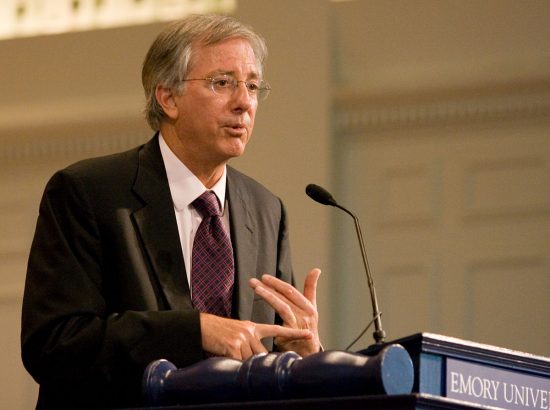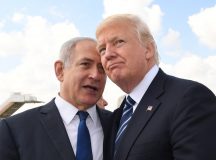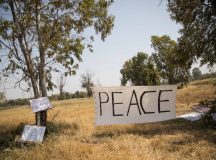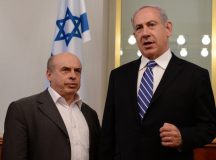As Israel approaches its 70th anniversary and the peace process at a low ebb, Dennis Ross, former Middle East advisor to four American Presidents, spoke to Fathom assistant editor Samuel Nurding about what the Trump administration can do to help keep the window of the two-state solution open. Ross argues that for any American plan to succeed, it must be prepared with regional allies and be accompanied by steps on the ground that help maintain the principle of separation.
I’m not optimistic right now. The level of disbelief on both sides is high, and neither the Israelis nor Palestinians believe a two-station outcome is going to happen in their lifetimes. Disbelief often becomes a self-fulfilling prophecy, and undermines any sense of possibility meaning that neither side invests in the idea of two-states because they don’t believe it’s going to happen. I’m worried about this dynamic and I feel currently the path we are on is going to lead to a one-state outcome. The question becomes how do you change that path?
In the end it’s not the responsibility of the US or international community to keep the two-state window open but rather the two sides’. The question is can the US play a role that will make it more likely for the Israelis and Palestinians to do such a thing. Here the critical element is understanding that an agreement is not likely any time soon because the psychological and conceptual gaps between both parties has never been wider. In this context the key is whether the US can help change realities on the ground.
One reason prospects for a two-state outcome are very low is because no one has an answer to Gaza or Hamas’s control of it. Palestinians will never accept a situation in which their state does not include both the West Bank and Gaza, suggesting that at this stage we are in a more ‘conflict management’ stage of the conflict.
There is a clear understanding in the Trump team that they will need to show that they are able to do something to help things on the ground in Gaza and that if Gaza explodes they will not be in any position to present a peace plan. Palestinian Authority (PA) Chairman Mahmoud Abbas is squeezing Hamas, which has pushed it to respond against Israel with demonstrations along the border fence, (which has subsequently put additional pressure on Abbas). The terrible conditions in Gaza can create an explosion because people have nothing to lose. And the need to address the economic and humanitarian conditions in Gaza is actually a consensus issue in Israel.
Maintaining the two-station solution means preserving the idea of separation, which in turn means Israel should stop building outside the settlement blocs (which because there isn’t an agreed definition of what constitutes a bloc, this in practice means not building in any areas to the east of the barrier or not expanding the geographic size of settlements located outside the blocs – i.e. building up rather than building out. The greatest single risk to the two-state outcome – aside from both parties psychologically not believing it is possible – is a situation in which separation becomes impossible because there is so much co-mingling between populations.
Advancing this idea will be very difficult for the right-wing part of the current government, particularly for the Jewish Home and for some members of the Likud. If Prime Minister Benjamin Netanyahu was not politically constrained, this might be the kind of thing he would accept. Whether he could accept such a condition at this stage may depend upon the US plan including steps on the ground and also US commitments that would also show what Netanyahu is getting from America
I’ve never been against the idea of presenting peace plans, or principles, but I have been opposed to presenting principles if they aren’t correctly prepared and don’t produce a favourable – or at least acceptable – response, meaning being perceived as a basis for negotiations, and subsequently creating new standards as a basis for future agreement.
Assuming the Trump administration will present its peace plan, it will be critical to prepare the ground well enough for it not to be rejected by Arab states and for them – and the Europeans – to state publically that they see credible elements in it that create a basis for talking. Generating this response will be particularly important as Israel is likely to say it doesn’t accept everything but is prepared to talk on its basis.
PA Chairman Abbas is likely to reject the plan because he is still operating in an environment where he is reacting to the decision to move the American embassy to Jerusalem. The worst case scenario is the Arabs support him and the US is not able to gain any positive response. Getting Arab leaders – and European leaders – to say it has credible elements would provide a basis for a process.
Another essential component of a peace plan is that it be accompanied by steps on the ground. Regardless of how good a plan looks, if it seems disconnected on the ground, it will ultimately be unlikely to go anywhere. So there needs to be both a connection to events on the ground as well as enough in the plan to allow Arab leaders to point how Palestinian interests are being addressed.
The problem with President Donald Trump’s Jerusalem announcement was not its content but the way in which it was presented. It wasn’t properly prepared. If a US peace plan is to work, it has to be prepared with those who the US wants to say something favourable about it. If we want to promote an outside-in approach [where close relations between Israel and the Arab states lead to an Israeli-Palestinian agreement], the last thing to do is to cut into the Arab states’ political space for manoeuvring or give them fewer incentives to publically support what is presented.
The embassy announcement produced a defensiveness on the part of the key Arab leaders which made them less likely to take the steps we want them to take for peace. If President Trump had gone to the Saudis after his June waiver [which postponed moving the embassy for an additional six months] and said, ‘I’m not going to exercise the waiver again, so let’s talk now about how we can implement this in a way that doesn’t cause you problems,’ the sides could have worked on framing and beginning to condition the environment. They could even have argued that the Arab Peace Initiative – which acknowledges full normalisation with Israel if it withdraws to the June 1967 lines – means that West Jerusalem is accepted as being part of Israel. So when we the Americans recognise Jerusalem as the capital of Israel, we’re pointing out a reality that some significant part of Jerusalem is going to be the capital of Israel in any agreement.










































